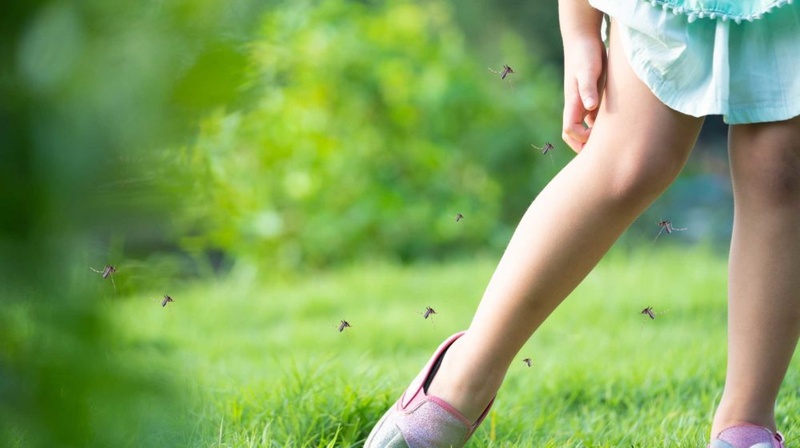
Spring Pest Management
Warm spring temperatures bring out the birds, flowers, and…pests. Six common insects you may see on your Florida property this season are mosquitoes, ants, termites, bees, wasps, and chinch bugs. We take a look at these insects and what you can do to manage them.
Oh, the joys of springtime – chirping birds, blooming flowers, new greenery, and pleasant temperatures. Yet every rose has its thorns. And spring’s thorns? The pests this season brings out.
While you may have put warm-weather pests out of your mind during winter, it’s time to prepare for those pesky insects. In this blog, we tackle identifying and managing six common pests you may find around your property.
Mosquitoes
Mosquitoes come out once the temperature is consistently at least 50 degrees. While they’re mostly just a pain, some carry dangerous diseases, like the Zika virus, malaria, dengue fever, and West Nile Virus.
- Stock ornamental ponds with fish or aerate them to reduce mosquito populations
- Keep fans around sitting and working areas to blow mosquitoes away
- If using chemical products, make sure to purchase products advertised for flying insects
- Avoid these popular but ineffective methods: repellent bracelets, bug zappers, or eating certain foods
Ants
Ants of several kinds are unfortunately populous in Florida. Fire ants are one of the most well-known – and loathed – species, but you’ll likely see a handful of others, including acrobat, carpenter, ghost, and pharaoh.
- To effectively control an ant colony, you must kill the queen (or queens, as some colonies have multiple).
- Treat a colony quickly by slowly pouring at least three gallons of boiling water into the anthill.
- Remove the anthill manually by digging up the mound and carrying it away by the bucketful. Keep the ants contained by coating your shovel handle and bucket walls with baby or talcum powder.
- Certain organic insecticides and pesticides are useful but slower to eliminate the ants.
Termites
Florida is home to 21 termite varieties, but not all species are considered structural pests. Look for signs of termites – eaten wood and piles of droppings – around exposed wood on your property.
- Termite management requires a professional. The termite species first needs to be identified to determine what action, if any, must be taken. Call your pest control company at the first sign of termite presence.
- Take preventative measures to discourage termite infestations: keep mulch away from exterior walls; decrease moisture near the foundation; seal holes and cracks outside your home; and leave six inches of space between the ground and stucco or siding.
Bees & Wasps
There’s a lot of variety in stinging insect species, but most bees and wasps live in colonies and will defend these colonies aggressively. Some pose a threat to humans, while others are harmless.
- Know what you’re dealing with. Some species, like mud daubers, are annoying but rarely sting. If you can’t identify the species, refer to a professional.
- If removing a hive or nest on your own, do so only with protective clothing and the appropriate tools.
Chinch Bugs
Chinch bugs kill large patches of turfgrass at a time by sucking the juice from grass blades. They are significant pests of St. Augustine and zoysia grasses. Detecting these small insects is tricky, but they are usually found in the border area of live and dead grass.
- If you have St. Augustine or zoysia grass, keep an eye out for brown sections to stop infestations early.
- Avoid stressed turfgrass: irrigate properly, mow to an appropriate height, fertilize minimally, and dethatch if necessary.
- Treat chinch bugs right away and with the appropriate pesticide.